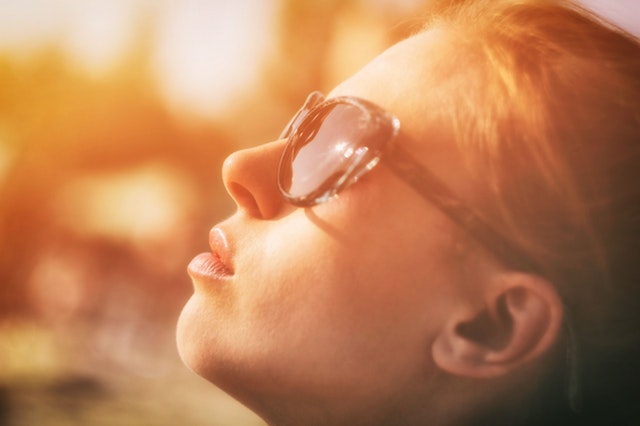
Walk down the aisle of your local beauty store, and your eyes are sure to glaze over the serene names of every scent you can imagine—from Vanilla Sky and Lavender Honey to Flowers of the Mediterranean.
While sweet in scent and style, the environmental implications of these synthetically scented products (from perfumes and hair sprays to candles and air fresheners) are far from pleasant.
These perfumes and other scented products are considered volatile chemical products (VCPs) which contribute the same amount of chemical vapors as petroleum emissions from cars, despite car fuel burning 15 times more petroleum, according to a study by the National Oceanic and Atmospheric Administration. Due to their emission of VOCs (also known as volatile organic compounds), volatile chemical products now contribute to half of the fossil fuel VOC emissions in thirty-three industrialized cities.
Luckily, a new type of perfume is growing in the market to challenge the damaging side effects its beautifully branded predecessors.
The best part? This new type of perfume is made entirely of trash.
The Beginning of Upcycled Fragrances
Born out of the growing consumer concern for alternative, eco-friendly products, upcycled fragrances are the result of utilizing products that would otherwise wind up discarded or decomposed.
From wasted coffee grounds and spent rose petals to leftover cardamom pods and used sawdust, beauty companies are now looking within their waste bins to see what can be repurposed, reused, and recycled for the sake of sustainability.
In an industry of synthetic scents, these perfume’s focus on upcycling ingredients not only reduces waste, it also reemphasizes the necessity of using natural ingredients.
Turning Trash Into Treasure
The “first luxury perfume created by Upcycling,” Etat Libre d’Orange’s I AM TRASH set a lofty goal for the rest of the fragrance industry: to make a perfume using only discarded ingredients that would otherwise get thrown away.
After multiple “sniffing sessions,” Etat Libre d’Orange landed on a perfume made with exhausted rose petals, already distilled Sandalwood chips, and leftover apples from the food industry. Fruity, floral, and woody, this winning combination of trash quickly grew to become Etat Libre d’Orange’s best-selling product in the company’s history.
Beyond Etat Libre d’Orange, other brands such as Ellis Brooklyn, St. Rose, Aftelier Perfumes, and The Nue Co. have also adopted similar upcycling practices to meet the demand from eco-conscious consumers.
And while Etat Libre d’Orange partnered with popular Swiss fragrance company, Givaudan, to create their iconic scent, smaller brands are getting even more creative with where they source their upcycled materials from.
A prime example includes fragrance brand Ellis Brooklyn, which sources leftover cardamom pods from the spice industry, chips and sawdust for cedarwood from a furniture company, and tree stumps that would otherwise be thrown out. With a commitment to sustainability, clean formulation, and continued innovation, Ellis Brooklyn strives to balance natural and synthetic products to find the perfect mix of the safest, most sustainable options.
Resisting Greenwashing In The Upcycled Fragrance Movement
As positive as the upcycled fragrance movement may be, founder of wellness brand The Nue Co., Jules Mille, offers a warning in an article by The Zoe Report.
“I believe upcycled fragrances will catch on,” Mille states, “but unfortunately I think it will also fall victim to sustainability greenwashing. Using one upcycled ingredient in a formula does not immediately make your brand clean or sustainable—with much in this field, I fear it could become another buzz word.”
According to Investopedia, greenwashing is “the process of conveying a false impression of providing misleading information about how a company’s products are more environmentally sound.” This allows perfumes that fail to do the difficult work of creating a cleaner, more sustainable product to reap the same benefit as those who are by placing a vague “upcycled” label on their product.
To combat Mille’s credible concern, consumers should continue to make conscious choices to support brands that hold eco-friendly initiatives as a pillar of their businesses, rather than focusing on buzzwords and stylish packaging that evoke vague green messaging.
***
While a relatively new concept, upcycling fragrance seems to be a style trend that’s here to stay. It’s greener, cleaner, and leads to new growth and innovation within the fragrance industry.
And although the old world of beauty may have gone for synthetic products with labels like “Lily of the Valley” and “Essence of Rose,” I much prefer my products to be substantial and sustainable.
Who knew trash could smell so sweet?
Get more like this—Sign up for our daily inspirational newsletter for exclusive content!
__
Photo: Valeria Boltnova via Pexels




